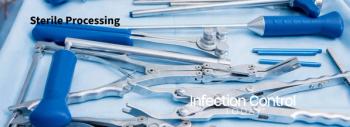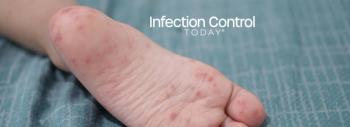
- Infection Control Today, October 2021 (Vol. 25 No. 7)
- Volume 25
- Issue 8
Beware of Gown-Glove Interface
There needs to be a national standard for measuring the effectiveness of personal protective equipment at its most vulnerable spot—the wrist, urge CDC investigators.
P
roper donning and doffing of personal protective equipment (PPE) lowers the chance of spreading pathogens in a hospital or other health care facility. It involves several steps, but it’s worth doing well because the equipment protects patients and health care workers from the many deadly pathogens that can strike. COVID-19 and its variants aren’t the only dangers infection preventionists (IPs) have to deal with.
The Centers for Disease Control and Prevention (CDC) offers IPs and other health care professionals a step-by-step guide for how best to put on and take off PPE.1 And as the CDC’s National Institute for Occupational Safety and Health (NIOSH) notes, the various parts of PPE may come from different sources, or manufacturers, and that presents a problem.2
PPE may not fit as snuggly as it should. “A particularly vulnerable area is where the glove and gown meet: the glove-gown interface,” NIOSH points out. “This interface is considered one of the weakest areas because gaps can occur, allowing infectious fluids to seep through to the skin.” Recently, CDC investigators measured just how much pathogenic leakage can occur at the interface. Their findings, published in the American Journal of Infection Control, led them to conclude that there needs to be a national standard developed for measuring the safety of the glove-gown interface.3 That standard must take into account the various design factors of the different models of gloves and gowns.
The investigators evaluated “the fluid leakage through the glove-gown interface by simulating exposures and HCP [health care personnel] arm movements in patient care. We tested fluid leakage of 2 examination gloves with different cuff lengths and 7 isolation gown models designed with varying levels of barrier resistance and multiple cuff types.”
Gowns with a thumb loop design provided the best protection. The next best was the elastic cuff design, followed by the knit cuff design. But the investigators didn’t think any of the designs provided the proper protection because they found substantial leakage through gown fabrics.
They concluded that there’s “a need to develop a standardized method to evaluate leakage at the glove-gown interface to improve worker protection.”
That conclusion mirrors what NIOSH says about the glove-gown interface.
“Despite this concern, the glove-gown interface has received little research attention, so minimal guidance is available on how to prevent gaps. Furthermore, no standardized test currently exists to evaluate leakages in new products,” NIOSH says.
References:
- Sequence for putting on personal protective equipment (PPE). CDC. Accessed September 7, 2021. https://www.cdc.gov/hai/pdfs/ppe/ppe-sequence.pdf
- Inside NIOSH: robotic arm tests glove-gown protection in healthcare. NIOSH Research Rounds. CDC. Updated April 15, 2019. Accessed September 7, 2021. https://www.cdc.gov/niosh/research-rounds/resroundsv4n10.html
- Kahveci Z, Kilinc-Balci FS, Yorio PL. A simulation study to assess fluid leakage through the glove-gown interface in isolation settings. Am J Infect Control. Published online August 21, 2021. doi:10.1016/j.ajic.2021.08.013
Articles in this issue
about 4 years ago
Without an Engaged Community, Infection Prevention Can Flounderabout 4 years ago
Surging or Shackled? Flu Season Could Go Either Wayabout 4 years ago
Drugs in Development Might Help Fight Deadly Candida Aurisover 4 years ago
Keeping an Eye on Pediatric COVID-19 Casesover 4 years ago
Take a Stand Now to Stop COVID-19 Variantsover 4 years ago
COVID Contingency Plan Includes New Type of Maskover 4 years ago
Fight Infection With An Engaged Management TeamNewsletter
Stay prepared and protected with Infection Control Today's newsletter, delivering essential updates, best practices, and expert insights for infection preventionists.






